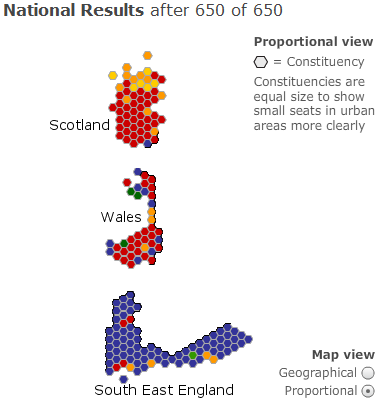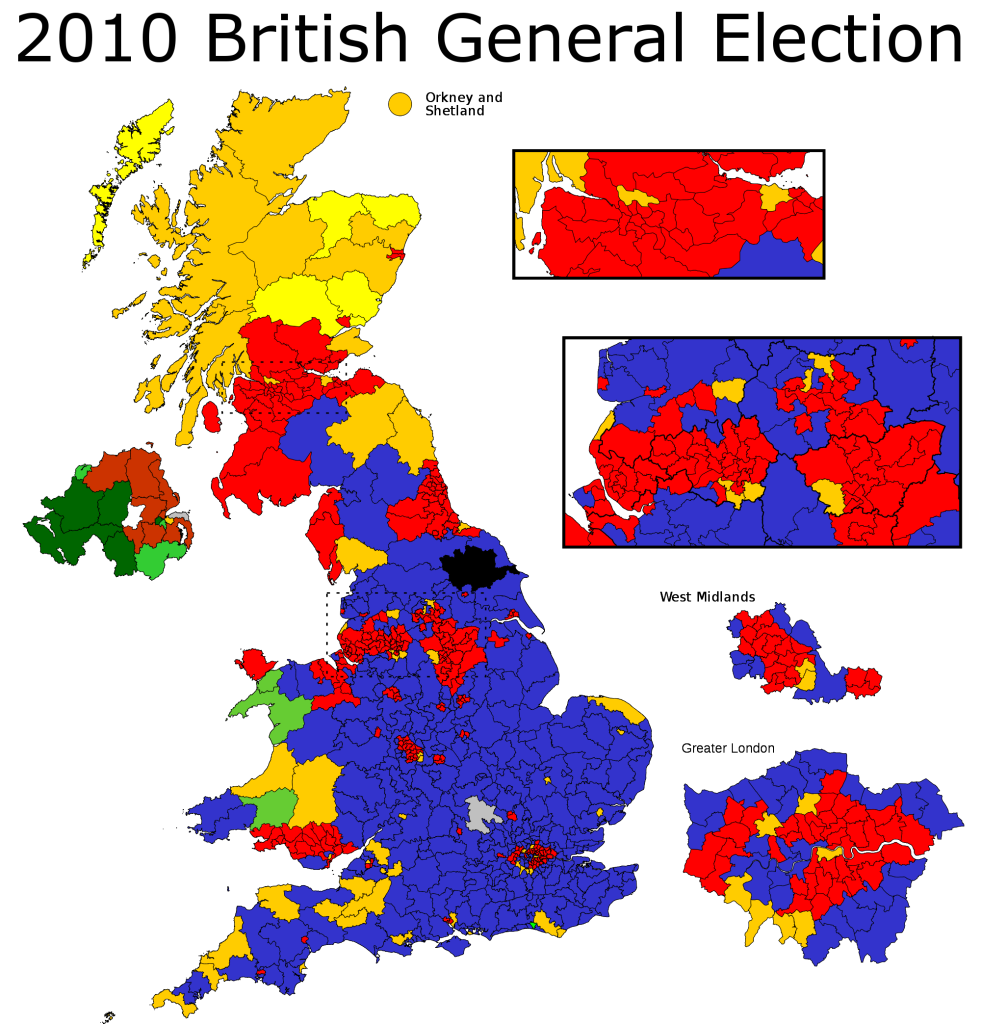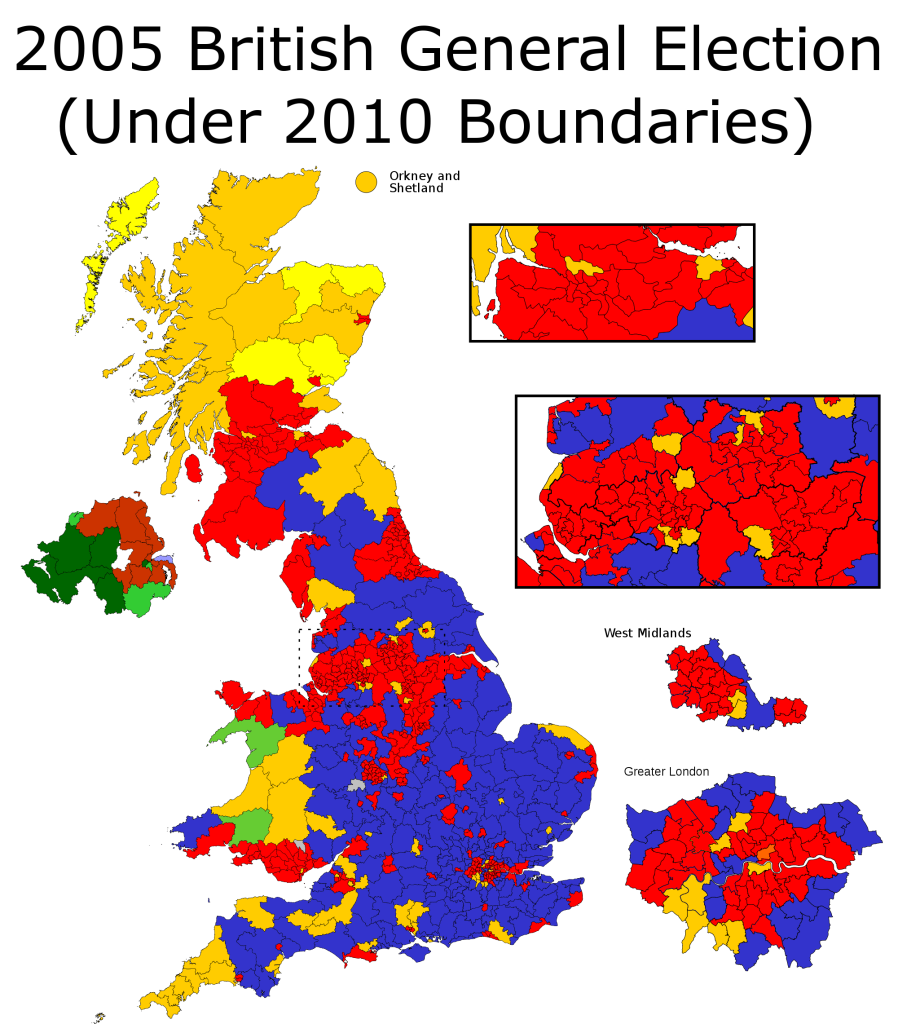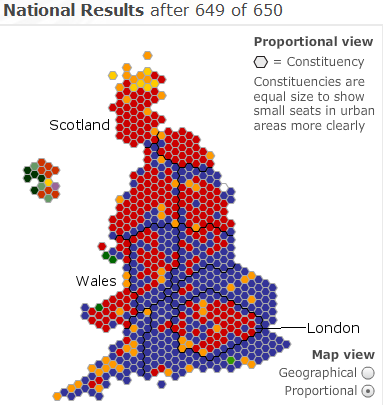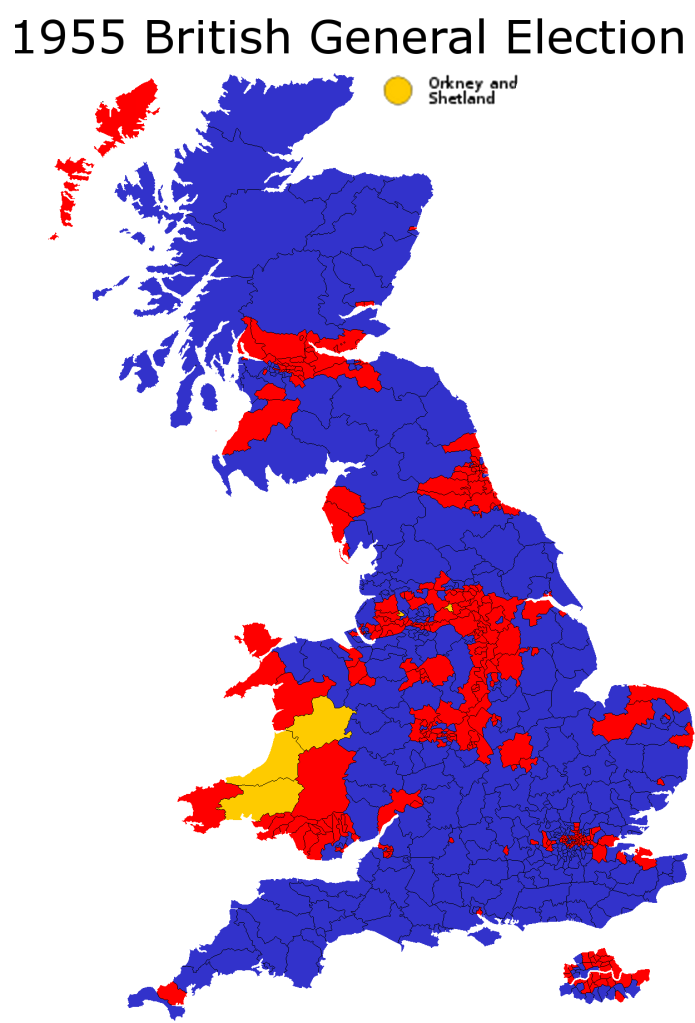By: Inoljt, http://mypolitikal.com/
On May 7th of 2010, the United Kingdom held a general election to determine its new prime minister. While the Conservative Party gained a number of seats, this was not enough to ensure a majority. Fears of a hung Parliament subsided, however, when the Conservatives joined with the Liberal Democrats to form a governing coalition.
Here is a map of the general election:
This map indicates the number of seats won by each party in the general election. Red – the traditional color for socialism – is the color of the leftist Labour Party; blue the color of the conservative Tories; yellow the color of the Liberal Democrats.
More below.
Like other countries, the United Kingdom does not vote homogeneously. Certain regions are more loyal to one party; other regions to another.
Take, for instance, three distinct parts of Great Britain: Scotland, Wales, and Southeast England. The voting patterns of all three reveal some fascinating things about the country:
As the map above indicates, Labour dominated Scotland, winning a total of 41 seats to the Conservative Party’s paltry single seat.
Several factors lie behind Scotland’s strong pro-Labour vote. There used to be a time when the Tories could rely upon a substantial bloc of Scottish voters, mostly in the rural North. Under Prime Minister Margaret Thatcher’s term, however, pro-market reforms led to the disintegration of Scottish industry – and to this day Scotland remains hostile to the Conservative Party.
Former Prime Minister Gordon Brown’s Scottish heritage also helped him in the region. Indeed, in Scotland Labour did even better than the previous general election, winning 2.5% more of the vote.
A comparison of Labour’s performance in Wales provides evidence of this. Like Scotland, Wales constitutes a Labour stronghold; in 2005 Prime Minister Tony Blair led his party to win 30 seats out of 40 total (the Tories won 3). In 2010, however, the Conservative Party gained five seats in this Labour base. In Scotland support for favorite son Mr. Brown may have boosted Labour fortunes; this was not the case in Wales.
Mr. Brown’s Scottish heritage did not help him everywhere. In the South East England region the Labour Party received a pummeling from the Tories; they lost 13 seats, leaving Labour with a grand total of 4 seats. The Conservatives took 75 seats. Clearly, Mr. Brown’s appeal was limited here; it is possible that his being Scottish had something to do with this.
An examination of Southern England reveals yet more regional differences:
This map illustrates the division between Southern and Northern Great Britain. Southern England has always constituted the Tory base; Northern England the Labour stronghold.
A number of fascinating socioeconomic reasons lie behind this. Historically, Southern England was – and still is – the richest, most “snobbish” part of the United Kingdom. Indeed, the South East region constitutes the richest part of the country, apart from London. It is from this region that the Conservative Party draws its main strength.
Northern England, Scotland, and Wales are different. The forces of the Industrial Revolution have influenced their history quite profoundly; for decades their economies relied – too much, in hindsight – upon the factories, steel mills, and coal mines unleashed by industrialization. The death of Anglo-Saxon manufacturing, however, hit this region hard and left it poorer than the South.
The Industrial Revolution also catalyzed conditions ripe for socialism and left-wing politics. It created an urban proletariat – and, indeed, the Labour Party was formed to represent this class. Today these places still vote heavily for the Labour Party.
Indeed, to this day Labour constitutes the party for the working class – despite Mr. Blair’s rebranding of New Labour. This is a role the Democratic Party no longer truly holds, its grasp of the white working class torn apart by racial politics. Great Britain is still homogeneous enough to avoid this. Class still matters in the United Kingdom, far more than it does in the United States.
(Note: All images derived from BBC News.)

